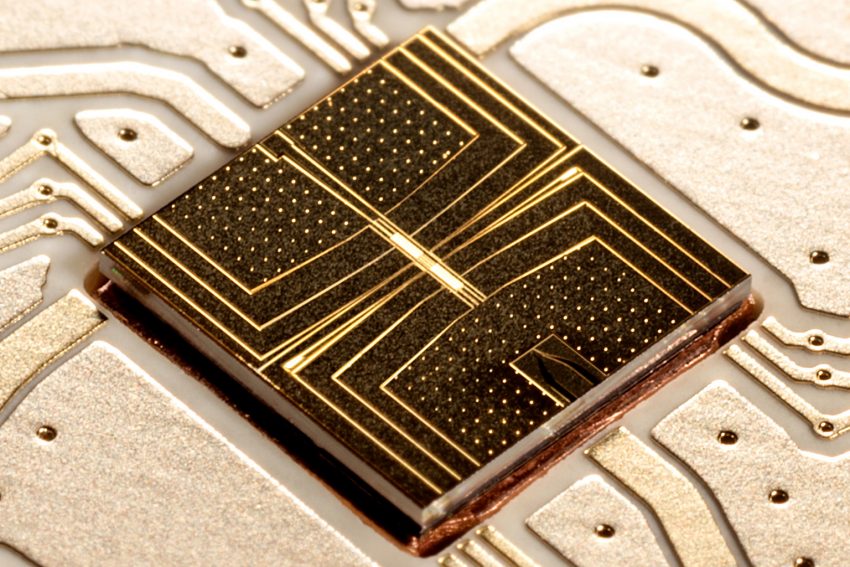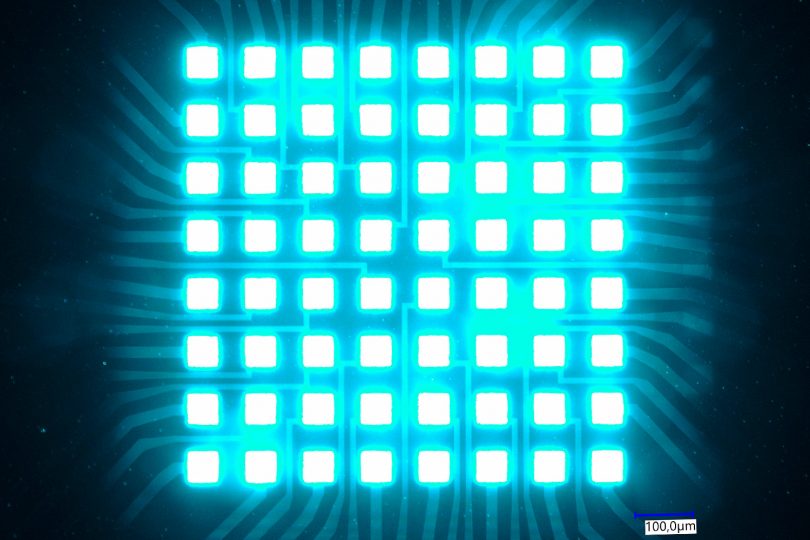QVLS Launch-Event Kick-off of the Quantum Valley Lower Saxony
The Quantum Valley Lower Saxony (QVLS) was officially launched with a digital event on February 10, 2021. Representatives from science, industry and politics came to symbolically reflect the profile of the association: A cross-institutional association working in concert to implement scalable quantum computing in Lower Saxony. The Technische Universität Braunschweig is part of the nucleus of the alliance with its core research area on metrology, the Cluster of Excellence QuantumFrontiers and the Research Center for Nanometrology “LENA“.

An ion trap, the central building block of Quantum Valley Lower Saxony’s scalable quantum computer. Picture credits: Christian Ospelkaus
Four months ago, Lower Saxony research institutions and companies jointly founded the Quantum Valley Lower Saxony (QVLS) association, supported by the Ministry of Science and Culture of Lower Saxony and the Volkswagen Foundation. The alliance combines Lower Saxony’s expertise in metrology, quantum physics and technologies, which has been optimized over the past 10 years with 220 million euros, to achieve a concrete goal: to build a quantum computer that realizes 50 qubits with ion traps by 2025. In the process, not only are all the prerequisites for a scalable quantum computer coming together under one roof, but also more and more partner institutions are being added. At the digital opening event, in addition to the leading scientists, there were also sponsors from politics and companies that want to bring the new quantum technologies into commercial application.
Background: quantum computing and ion trap technology
Like the basic arithmetic unit bit in a normal computer, the basic arithmetic unit of the quantum computer – a qubit – can assume the states 0 or 1. Unlike a normal computer, however, a qubit can also assume all states in between. Therefore, the amount of information a quantum computer can store and process increases exponentially with the number of qubits.
Ion trap technology uses ions – charged atoms – as the basic computational unit of the computer. One ion is one qubit. With the help of electric fields, these ions are trapped and controlled by radio waves and laser beams. This technique is one of the most promising approaches to realize a quantum computer with significant computing power.
Founding partners of Quantum Valley Lower Saxony
- Technische Universität Braunschweig
- Leibniz Universität Hannover
- Physikalisch-Technische Bundesanstalt
- Max Planck Institute for Gravitational Physics
- DLR – Institute for Satellite Geodesy und Inertial Sensing
- Sartorius AG
- NiedersachsenMetall
- QubeDot

